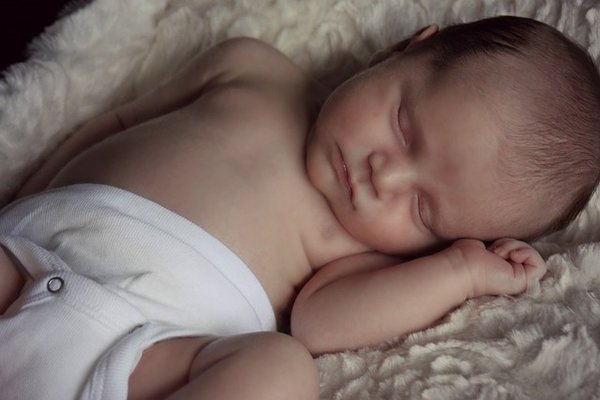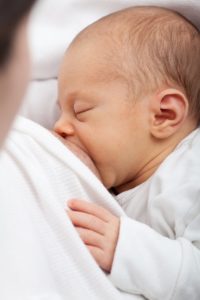Changing the Conversation On Infant Sleep to Keep Babies Safe
For many in the birth community, the name James J. McKenna is well recognized. An anthropologist, Dr. McKenna has served as the Director of the Notre Dame Mother-Baby Behavioral Sleep Laboratory since 1994. He is a world renowned expert on infant sleep and the protective role breastfeeding plays in sleep safety. McKenna has long been an advocate of co-sleeping or bedsharing, where mothers and infants sleep together. He has contributed to much of what we know about the nocturnal behaviors and physiology of mother-baby dyads. Dr. McKenna has recently published a commentary along with Notre Dame colleague Dr. Lee Gettler in the peer-reviewed European journal Acta Paediatrica. In it, they propose a new term for co-sleeping nursing families — breastsleeping. As he explains in the commentary:
“There is no such thing as infant sleep, there is no such thing as breastfeeding, there is only breastsleeping.”
For mothers who have had babies who spent most of the night at the breast – nursing, sleeping then nursing again without seeming to fully wake – the term is likely to elicit a wry smile (myself included!). McKenna and Lee are quite serious, though, and the point is well taken. We cannot talk about sleep without talking about breastfeeding and we cannot talk about breastfeeding without talking about sleep. To separate the two topics would be to ignore half the conversation. Babies need to be nursed both day and night. Mothers and babies need sleep. Ergo, breastsleeping.
Research, including studies led by McKenna at the Mother-Baby Behavioral Sleep Laboratory, demonstrates that the sleep patterns of breastsleeping mother-baby pairs are unique and appear to be protective of Sudden Infant Death Syndrome (SIDS). Breastleeping babies show lighter sleep, arouse more often and nurse more than those who sleep alone. Breastfeeding alone is also protective of SIDS and McKenna states that the more a baby is nursed, the higher the protective factor. Mothers who breastsleep “exhibit impressive behavioral sensitivities to their infants’ presence and behavior even while in deeper stages of sleep.” (Source:http://news.nd.edu/news/61145-researchers-propose-breastsleeping-as-a-new-word-and-concept/)
Expanding the Conversation on Co-Sleeping, SIDS & Breastfeeding
Yet, families are discouraged from co-sleeping with their infants. As recently as July 2014, the American Academy of Pediatrics issued a statement entitled, Bed Sharing Remains Greatest Risk Factor for Sleep Related Infant Deaths. So-called “Safe to Sleep” public health education campaigns worldwide also recommend against all forms of bedsharing regardless of feeding method. McKenna and Gettler suggest the concept and terminology of breastsleeping as a response to such positions and campaigns saying they can lead to mothers sleeping with their babies on sofas or in recliners, which is more dangerous than bedsharing. The researchers also note that separate sleeping arrangements can undermine breastfeeding and reduce its protective factor against SIDS.
McKenna and Gettler have been working to change the conversation about co-sleeping for some time. In 2010, the anthropologists authored a paper entitled, “Never Sleep with Baby? Or Keep Me Close But Keep Me Safe: Eliminating Inappropriate ‘Safe Infant Sleep’ Rhetoric in the United States” available here. In it, they note that while few mothers intend to bedshare (15% in one study and 16% in another), most end up doing so after baby arrives (65% and 84%). It would appear then, that information on how to breastsleep safely rather than telling parents to never sleep with their baby would help keep babies safer, McKenna and Gettler point out.
However, the “babies should sleep alone” message is so pervasive, they say, that families are not receiving critical information on how to co-sleep safely (i.e. in a bed without other children, a heavy duvet or gaps between the mattress and headboard) and the risk factors that make co-sleeping unsafe ,such as smoking during pregnancy. The study released by the American Academy of Pediatrics referenced in their statement defined bedsharing as sleeping on the same surface with a person or animal. Feeding method was not considered. McKenna believes that both feeding method and the specific location the adult-infant pair are sleeping (i.e. a bed versus a recliner) are key distinctions that should be made when educating parents on safe sleep. In addition, the AAP study noted that for older infants, lying prone and having objects nearby such as stuffed animals or blankets, were the greatest risk factors for SIDS and not bedsharing. This indicates that additional education on hazards, such as pillows, blankets and stuffed animals is needed regardless of where babies sleep.
In this video, McKenna explains why co-sleeping, when done safely, protects babies from SIDS and the information parents should have, but are not receiving, about safe co-sleeping. While released prior to the establishment of the term breastsleeping, it’s still a valuable resource for doulas and the families we serve about safe sleep:
Source Links:
http://anthropology.nd.edu/faculty-and-staff/faculty-by-alpha/james-mckenna/
http://cosleeping.nd.edu/
http://onlinelibrary.wiley.com/doi/10.1111/apa.13161/abstract
http://news.nd.edu/news/61145-researchers-propose-breastsleeping-as-a-new-word-and-concept/
https://www.aap.org/en-us/about-the-aap/aap-press-room/pages/Bed-Sharing-Remains-Greatest-Risk-Factor-for-Sleep-Related-Infant-Deaths.aspx
Click to access gettler_cpr.pdf
http://pediatrics.aappublications.org/content/134/2/e406.full.pdf+html




This was very helpful and a needed article. Thanks for writing this for the world to see.
What factors make sofa, couch or recliner sharing unsafe?
Hi Natalie – Babies can roll out of parents’ arms and become wedged between cushions and cushioned arms, or onto the floor, or between a parent’s body and padding. Teaching families to safely bedshare means less of chance of this happening.